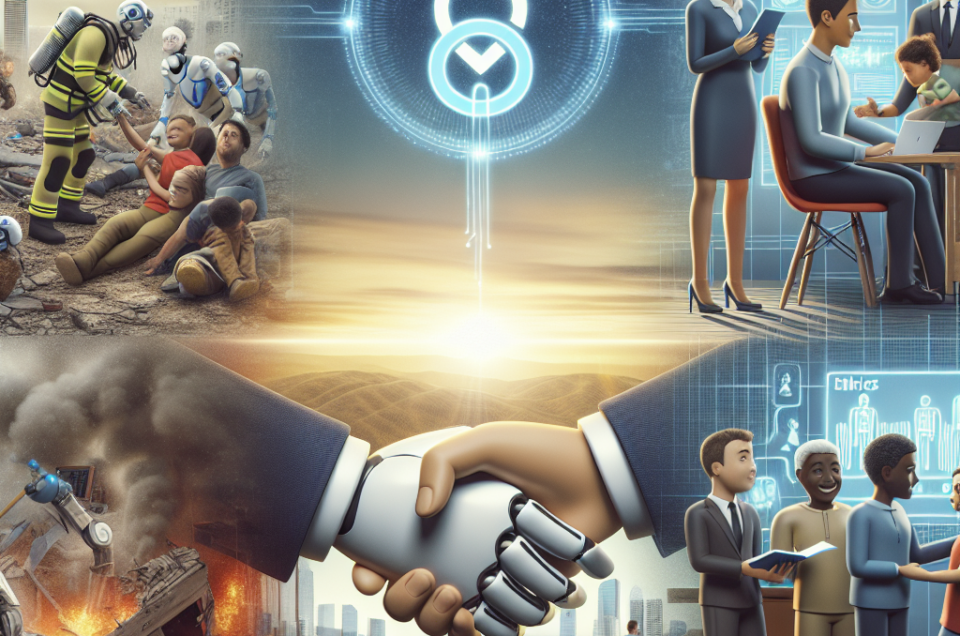The training of robots has evolved dramatically with the advent of artificial intelligence (AI). This article delves into the cutting-edge techniques transforming robot training, including reinforcement learning, simulation-based methodologies, and the generation of synthetic data. As we explore the latest research and innovations in this field, we will highlight how these advancements are reshaping the capabilities of robots, making them more efficient and adaptable in complex environments. Join us as we uncover the key insights and implications of AI in training the robots of tomorrow.
Simulation-Based Training
Simulation platforms, such as NVIDIA Omniverse, have transformed the landscape of robot training through advanced virtual environments. The NVIDIA Isaac Sim application exemplifies how these simulations provide a safe, controlled space for testing AI-driven robots before real-world deployment. By allowing developers to simulate and validate robot performance, the risk associated with physical trials is substantially minimized, enabling extensive experimentation without the threat of hardware damage or safety concerns [Source: NVIDIA].
One of the standout advantages of simulation training is the ability to generate vast amounts of synthetic data that can substantially augment training datasets. Tools associated with platforms like Isaac Sim allow for the synthesis of complex motion data from minimal input, honing robots’ abilities to adapt dynamically to varying tasks and environments [Source: NVIDIA]. Furthermore, the integration of both imitation and reinforcement learning within these simulations empowers robots to mimic human demonstrations and refine their skills through trial and error, respectively — crucial processes that enhance learning efficacy [Source: NVIDIA Omniverse].
The efficacy of simulation platforms is evident through case studies showcasing robots that excel in navigating unpredictable environments post-training in virtual settings. The capacity to run multiple scenarios concurrently permits evaluation of robot interactions, enhancing their collaborative capabilities [Source: NVIDIA]. Overall, immersive environments pave the way for sophisticated learning mechanisms, driving robots toward enhanced adaptability and performance in real-world applications.
Reinforcement Learning Approaches
Reinforcement Learning (RL) serves as a cornerstone in the development of intelligent robotic systems, providing a robust framework to train robots in executing complex, multifaceted tasks. The essence of RL lies in learning through exploration and feedback, allowing robots to navigate environments by discernibly optimizing their actions based on received rewards or penalties. For instance, Q-learning and deep reinforcement learning enable robots to learn navigation and object manipulation through iterative processes, where they encounter various scenarios and adjust their strategies dynamically based on outcomes of prior interactions [Source: Neptune.ai].
One significant advantage of leveraging human demonstrations in RL is how it influences the speed and efficiency of training. Robots can observe and mimic human actions, accelerating their learning curve in tasks that are otherwise challenging when approached through autonomous means alone. Additionally, this synergistic relationship—where robot autonomy and human guidance coexist—has manifested in impressive results across diverse use cases, such as optimizing industrial automation by improving efficiency and safety [Source: Lamarr Institute].
Moreover, real-world success stories demonstrate the method’s practical applicability, like DeepMind’s use of RL to manage cooling systems in data centers, achieving a notable 40% reduction in energy costs through continuous learning and environmental feedback [Source: NVIDIA]. Such instances underscore the powerful intersection of human expertise and machine learning in creating resilient robotic systems tailored for unpredictable environments.
Conclusions
In conclusion, the integration of artificial intelligence into robot training is revolutionizing their performance and adaptability. From the use of advanced simulation tools to the leveraging of synthetic data and reinforcement learning strategies, these innovations pave the way for smarter, more capable robots. As we continue to push the boundaries of what is possible in robotics, the ongoing research and development in this sector will undoubtedly yield significant advancements, making robots more efficient and aligned with real-world applications. The future of robotics training, fueled by AI, looks promising and is set to reshape industries.
Sources
- NVIDIA Omniverse – Isaac Sim Documentation
- NVIDIA – Robot Learning
- NVIDIA – Robotics Simulation
- Lamarr Institute – Reinforcement Learning and Robotics
- Neptune.ai – Reinforcement Learning Applications
- NVIDIA – Reinforcement Learning Use Cases
- Santa Clara University – 9 Examples of Reinforcement Learning
- Hexadecimal Software – Reinforcement Learning in Robotics: Applications and Challenges






